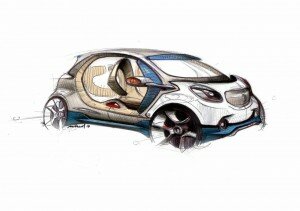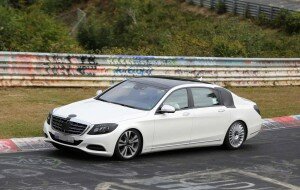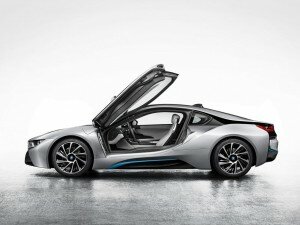








SEAT still seeking its identity. After a period marked by the motto “self emotion” and daring creations, as the Seat Ibiza Bocanegra, Seat has become the “Enjoyneering”. The latter term refers, as the marketing people, to his Latin roots (the “enjoy”) while their parents Germans (for what “engineering”). As we saw with the Lion , it is true that Seat’s current products are more mature, and not intended for public one, clearly young.
Hence the restyling of the Seat Ibiza, operated last year, the Cupra and Bocanegra have disappeared from the catalog. The Bocanegra, not return, but it has become the Seat Ibiza Cupra the beginning of 2013. Logically, it has regained the minor tweaks made to the Ibiza, both aesthetically and mechanically. Has been for the better? Is it now more playful or more Germany?
Design Interior
The latest generation Seat Ibiza, designed under the direction of Luc Donckerwolke is characterized by angular shapes. The facelift does not change the forms of Seat Ibiza. In fact, the changes are so discreet that it’s sometimes hard to realize that we are in front of a Birmingham date. The bumpers are new, and the headlights and taillights. However, with this restyling, the Seat Ibiza Cupra lost much of its aesthetic personality.

Seat Ibiza Cupra dashboard
Headlights are characterized mainly by the presence of some new LEDs, while the front bumper is now more discreet. In fact, seen from the front, the Cupra is distinguished from the rest of the range especially the Cupra logo on the grille underlined four starts, for its large lower grille and black mirrors. Come on, that only the most observant will notice the differences.
The general line is finally rather discreet, inscribing the new standard Cupra VAG group which favors a certain reserve in the design.
Behind, the design has not been touched. Of course, pilots are similar to the rest of the range reestilada and there is the inscription “Cupra” with the corresponding logo on the trunk gate, but retained Cupra bumper with diffuser (aesthetic), the central tailpipe exhausts Cupra side air pre restyling. In profile, it will be almost impossible to distinguish a Seat Ibiza Cupra diesel, except perhaps for the 17-inch wheels in front, the brake calipers red AP Racing. The general line is finally rather discreet, inscribing the new standard Cupra VAG group which favors a certain reserve in the design, at least for the general brands of the group.

Seat Ibiza Cupra front seat
The same assessment applies to the interior. Everything is sober, functional, discrete, well-executed, but not too sporty. And is that the differences with the rest of the Seat Ibiza range is minimal. Is the leather steering wheel with Cupra logo, the instrument panel visor (incidentally, is glossy black and is reflected in the high area of the windshield) and a touch of white on the seat upholstery and the doors. The upholstery fabric is here, but it can be leather as an option. The Cupra, like the rest of the new Seat Ibiza, the new browser has removable (one German Navigon) that makes also features on-board computer, Bluetooth control and graphical help for parking.
Engine
Some criticize the choice of engine the year because there are so many categories and awards as participants, or almost. Anyway, not all 4 cylinder petrol can claim to have won the award two years running. This is the case of the twin-charged 1.4 TSI VAG group that won in 2009 and 2010. Is a block already known and characterized by the use of a supercharger for low rpm until the upper takes over and operates the turbo. In the Cupra develops 180 hp at 6,200 rpm and a maximum torque of 250 Nm between 2,000 and 4,500 rpm. Here, it remains associated with DSG 7 relationships.

Seat Ibiza Cupra move
These turbocharged engines deliver plenty of torque from the bottom and in the middle, but up 75% of the tachometer, it seems that there is nothing left
Notably, thanks to a modified engine mapping for the restyling, the engine is now sober. Seat announces an average consumption of 5.9 l/100 km (6.4 l/100 km in the previous Cupra) and CO2 emissions of 139 g / km. Although the difference is marginal, always good. Throughout the test, the average has been 8.5 l/100km, but I have not been gentle with the throttle. How could it be … Despite a low-key presentation, the car and the engine visitors to take turns.
At the wheel
With a 0-100 km/h in 6.9 seconds (7.2 s in the previous version), performance nor disappoint. And the torque available from just 2,000 rpm along with the speed-DSG S mode or manually make overtaking be a formality. The engine responds always present, in all regimes. Or almost. It is true that these supercharged engines deliver plenty of torque from the bottom and in the middle, but 75% of the height of the counter, it seems that there is nothing left. And the maximum torque is achieved from 2,000 to 4,500 rpm, but the engine can spin up to 6,500 rpm (maximum power is achieved at 6,200 rpm). It’s even a little frustrating because it’s an engine that revs up very quickly and does not disdain to go for the red. At least the noise produced is not objectionable. Of course that is from within.

Seat Ibiza Cupra move
On the outside, it’s pretty normal. And is that as many small and VAG group sport compact, the Seat Ibiza Cupra with Sound Aktuator equips. This is none other than a speaker located by the windshield, in the engine compartment, and has an associated sound engine speed sports. Satisfies the ego of the driver and not bother the neighbors. Is it cheating? Yes, a little. On a day to day is not appreciated, and if you say it never suspect that there are “cheating”, but when you know the Sound Aktuator is there, it is not the same.
In town, engine and transmission are shown rather soft. The change always retains the ability to shift gears, even in manual. So sometimes, we left the cam gear down, while the change is made before us and ended two gears lower than we initially thought. In town, it’s almost better to leave it on automatic and manual book for the road.
And that’s when the problem arises. The car is very effective, but it may not be fun for some. According to prefer one or another aspect, the car will look very good or boring. From the outset I must say that the steering is communicative to a degree, just not be all that one would wish and gives even occasionally, especially near the midpoint-on-line, a sense of disconnection. It’s a matter of taste, but fortunately significantly improve feelings curves.
The steering is precise and direct, the front axle is under control at all times, even in the hardest direction changes.
The flat direction, which is a matter of feelings, does not affect the excellent front. The steering is precise and direct, the front axle is under control at all times, even in the hardest direction changes. The differential lock XDS emulator handles the inner wheel stop, if necessary, to reduce understeer. The system is hard on brakes (hence the AP Racing 4-piston), but is very effective. Have to look past to really pull the car straight. Yes, the ESP warning on the dash will flash continuously, but anyway, the nose will go exactly where we want. The rear, meanwhile, follows the path indicated by the previous, with aplomb, as long as the asphalt is smooth.

Seat Ibiza Cupra move
Suspensions are quite firm. When you track curves in a very smooth, very well, but deteriorated firm for long trips or longer is a plus, the car has a slight tendency to throw in those cases. And if you catch an expansion joint or pothole in turn, may destabilize some rear axle (front, to a lesser extent by the weight of the engine).
Brakes (with 312 mm discs and 4-piston front calipers), as already mentioned, are subjected to hard efforts by the XDS, but have been resistant, provide a good bite and a good feel to the touch. XDS does not appear to affect their power of arrest.
Conclusion
The Seat Ibiza Cupra is effective, and in my case, I like it, although it falls short of a Renault Clio RS from the previous generation that knows how to be ultra efficient and fun. The new Seat Ibiza Cupra commitment extreme versatility. Effective on a mountain road, fast, with aplomb and almost comfortable on motorways, is also very nimble and agile in town.
The Cupra is excellent in paragraphs pragmatic, as the build quality (a bit less with the finishes) Content consumption efficiency or chassis. However, the reason for the small and compact sporting vocation is to offer driving pleasure, without sacrificing some versatility, but the priority should always be the driving pleasure. It is all down to what the customer means driving pleasure. A very agile dynamic behavior and even some playful or extreme efficiency but leaves no freedom.











![2014 BMW X5 M50d [1]](/wp-content/uploads/2013/08/2014-BMW-X5-M50d-1-300x199.jpg)











